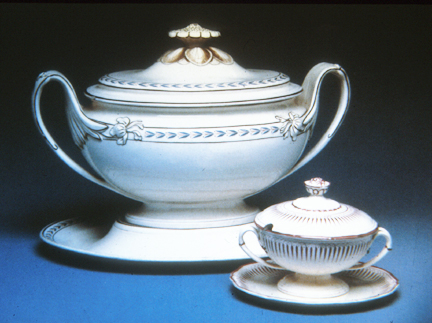Josiah Wedgwood was the youngest child of the potter Thomas Wedgwood and came from a family whose members had been potters since the 17th century. After his father's death in 1739, he worked in the family business at Churchyard Works, Burslem, becoming exceptionally skillful at the potter's wheel and, in 1744, at the age of 14, became an apprentice to his elder brother Thomas. However, an attack of smallpox would cause him to limit his work. This period of inactivity proved beneficial, as he had time to read, study, research and experiment with clays and glazes. In 1754, he would join with Thomas Whieldon, the foremost potter of the time, in a very successful pottery venture. Wedgwood began keeping his 'experiment book,' which has become an invaluable source of information about Staffordshire pottery techniques and materials.
"After inventing the improved green glaze still popular today, Wedgwood terminated his partnership with Whieldon and went into business for himself at Burslem, first at the Ivy House factory, where he perfected cream-coloured earthenware that, because of Queen Charlotte's patronage in 1765, was called Queen's ware. Well finished and clean in appearance with simple decoration, Queen's ware became, by virtue of its durable material and serviceable forms, the standard domestic pottery and enjoyed a worldwide market." (Encyclopedia Britannica).

Tureen with lid and stand, sugar bowl and plate, Wedgwood 'Queen's Ware,' Earthenware, English 1775 CE


